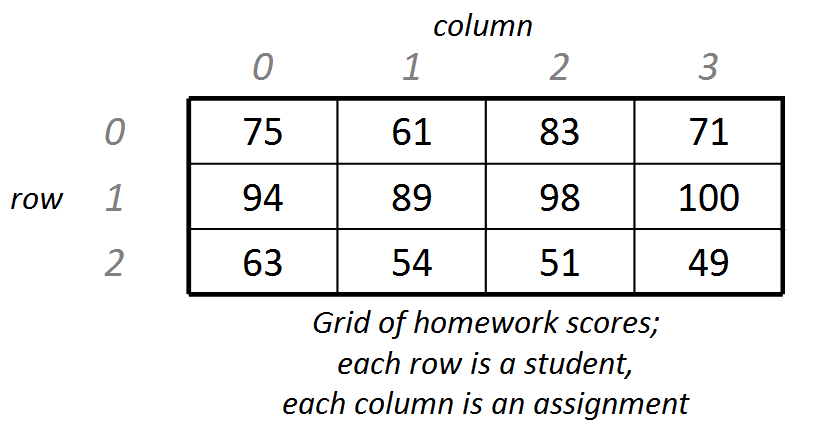Lecture Preview: Streams, Grid
(Suggested book reading: Programming Abstractions in C++, Chapters 3-4; 5.1)
Today we will learn about the C++ stream objects that perform input and output (called "I/O") from the console or files. Here is an example of using a stream to read a file and print its contents:
#include <fstream>
#include <iostream>
#include <string>
#include "console.h"
using namespace std;
int main() {
// read and print every line of a file
ifstream input;
input.open("poem.txt");
string line;
while (getline(input, line)) {
cout << line << endl;
}
input.close();
return 0;
}
This code uses two different stream objects:
inputis an input file stream, orifstream.- And you already know about
cout, which does console output.
We will also learn about a collection object named Grid.
A Grid is a two-dimensional rectangular collection that stores data in rows and columns.
A grid is similar to a 2D array except with simpler and more convenient functionality.

When you declare a grid, you write the type of data it will contain in < > brackets.
Here are two short code examples that use a grid:
Grid<char> tictactoe; tictactoe.resize(3, 3); // makes a 3x3 board tictactoe[1][1] = 'X'; // player X claims the center square of tic-tac-toe tictactoe[0][0] = 'O'; // player O claims the top left square tictactoe[1][0] = 'X'; // player X claims the left middle square tictactoe[2][2] = 'O'; // player O claims the bottom right tictactoe[1][2] = 'X'; // player X wins!
Grid<string> chessBoard; chessBoard.resize(8, 8); chessBoard[2][3] = "knight"; chessBoard[1][6] = "queen";
